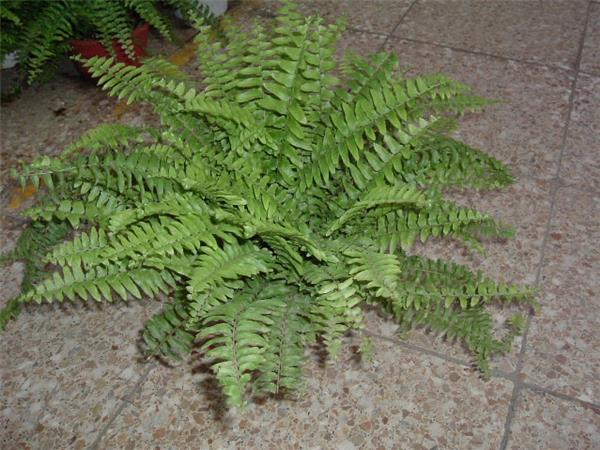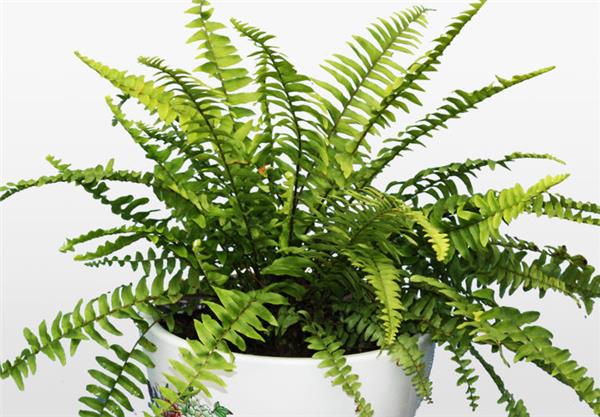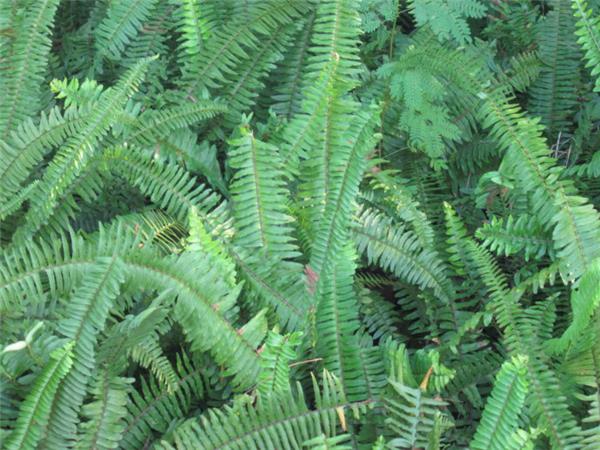How to cultivate Pteris vittata without yellowing
Pteris vittata can be regarded as one of the plants with the most aliases, such as grate grass, kidney fern, round sheep tooth, Phoenix egg, centipede grass, stone yellow bark and so on. After the cultivation of artificial technology, Pteris vittata is not only a wild plant, but also has evolved into a popular indoor landscape plant because it has both environmental beautification and medicinal effects.

Let's take a look at how to grow centipede grass.
I. the planting mode of centipede
1. Spore planting
When the sporangium on the back of the leaflet first appears, it is pasted into a strip paper bag according to the size of the compound leaf, and the base is tied up on the compound leaf, and the spores will automatically fall into the paper bag when they mature. When harvesting, cut the compound leaf of the bag from the base, let the end of the leaf gently shake down, concentrate the spores to the bottom of the bag, take out the compound leaf, and then concentrate the spores in each bag. Soil preparation should be made in advance before sowing. Rub brown peat into powder noodles and sift them fine, put them into a steamer for more than 1 hour to disinfect, remove them and load them into a clean "shallow seedling" while hot, scrape flat and press solid, soak the soil with the sowing method of basin bottom, then sow the spores sparsely on the surface of basin soil according to the sowing method of particulate seeds, do not cover the soil, immediately cover with white paper and glass, and put them at room temperature of 20 ℃ ~ 24 ℃.
two。 Ramet planting
After overwintering, the old plants begin to produce curly young leaves from underground tubers after the warm spring, and ramet propagation should be carried out before the emergence of new leaves. Stop watering two days before taking off the basin, and cut them into several pieces with kitchen knives and white leaves after taking off the basin. Each root mass should have 5-6 compound leaves, which should be planted separately on the pot. Each "billet basin" old plant can be divided into 4 pots, watering once after basin, shade maintenance, spraying water every time to increase air humidity, basin soil should not be watered as long as it is slightly moist, so as to prevent the incision on the tuber from rotting. After the young leaves are rolled out, cut off the old leaves and water them normally.

2. Culture and nursing of centipede grass
Soil: the root system of Pteris vittata is shallow and has a certain degree of gas, so the cultivated soil needs to be loose, fertile and well drained. Basin soil is generally mixed with rotten leaf soil or peat soil plus a small amount of garden soil, and fine sand and vermiculite can also be added to increase water permeability. When used as a hanging basket, rotten leaf soil and vermiculite can be used to cultivate the same amount of soil, which is lighter in weight and suitable for hanging. When potted at home, in order to keep the soil moist, some water moss and peat moss can be mixed into the culture soil, which is very beneficial to the growth of kidney fern. In addition, potted plants often use 1 part of rotten leaf soil or peat soil, 1 part of river sandy soil and 1 part of vermiculite or perlite as substrate, and can also be mixed with 2 parts of rotten leaf soil and 1 part of river sandy soil. At the same time, adding a small amount of calcareous nutrients such as bone powder and eggshell powder to the culture soil is also beneficial to the growth of kidney fern.
Sunshine: kidney fern likes bright scattered light, spring, summer and autumn can be placed in the indoor north window for maintenance, but pay attention to ventilation. Keep it in the shade to avoid direct sunlight when you put it outside for maintenance. If the light is too strong, the leaves are easily scorched yellow, and if the kidney fern is too shaded, the feather leaves are easy to fall off.
Temperature: kidney fern is not resistant to severe cold, warm work should be done in winter, keep the temperature above 5 ℃, it will not be frost damage; when the temperature is above 8 ℃, it can grow slowly, but it should not be placed near the heat source, otherwise it will often cause excessive growth due to high temperature and affect the overall plant type. When cultivated in winter, special attention should be paid to prevent frost and cold wind at night. Kidney fern is also afraid of extreme heat, high summer temperature, intense transpiration, must do a good job of heat prevention and cooling, pay attention to maintain good ventilation, and constantly spray water to the plant, which can also make the leaf color more tender green. In summer, under the condition of fully watering and spraying water, kidney fern can grow normally when the temperature is 30 ℃ ~ 35 ℃.
Watering: in summer, in addition to keeping the basin soil moist, it is also necessary to spray clear water on the leaf surface of kidney fern 2-3 times a day to increase air humidity in order to keep the leaves green. When the air is dry, the feather leaves of Dryopteris are easy to curl and scorch, which reduces the ornamental value. But watering can not be too much, if the basin soil water, it is easy to cause kidney fern leaves withered and yellow fall off.

Fertilization: kidney fern does not blossom, does not bear fruit, does not consume much nutrients, and the requirement for fertilizer is relatively meager. The fertilizer of kidney fern is mainly nitrogen fertilizer. In the peak growth period of spring and autumn, thin cake fertilizer and water, or organic liquid fertilizer or inorganic compound liquid fertilizer dominated by nitrogen are applied every half month to one month. Proper fertilization can keep the leaf color green for a long time, and make the plant full of vitality and exuberant vitality.
Diseases and insect pests: kidney fern has fewer diseases and insect pests in cultivation, but sometimes it will encounter some problems due to poor management. For example, there are slugs in too humid places, scale insects occur when ventilation is poor, and sometimes nematodes cause brown round spots on the leaves, affecting ornamental. These problems can be effectively avoided and overcome as long as we manage them correctly and carefully, pay attention to the growth habits of kidney fern and provide it with suitable conditions such as temperature, humidity, light, soil and so on.
Change the basin: the underground stolon of Pteris vittata has a strong ability to grow, and the seedlings will fill the whole basin after growing for one year. Every early spring, the basin should be turned over and the soil should be changed into the basin mixed with peat, rotten leaves and flour sand. The furnishings in the hall can be replaced into the "three hoops", and the largest household furnishings can be changed into the "billet basin". If you do not split the plant when turning the basin, you should cut off part of the surrounding whisker root and cut off the old leaves so that the plant can be renewed thoroughly.

In addition, there is also an example of water culture of Pteris vittata. At this time, just pay attention to the replacement of basin water and nutrient solution. Well, after the introduction above, have you learned how to raise centipede grass at home? Although its name is not good, but as an indoor ornamental plant, the leaf shape is still of great ornamental value, you can try to keep it.
There is the occurrence of scale insects, and sometimes nematode damage, resulting in brown round spots on the leaves, affecting ornamental. These problems can be effectively avoided and overcome as long as we manage them correctly and carefully, pay attention to the growth habits of kidney fern and provide it with suitable conditions such as temperature, humidity, light, soil and so on.
Change the basin: the underground stolon of Pteris vittata has a strong ability to grow, and the seedlings will fill the whole basin after growing for one year. Every early spring, the basin should be turned over and the soil should be changed into the basin mixed with peat, rotten leaves and flour sand. The furnishings in the hall can be replaced into the "three hoops", and the largest household furnishings can be changed into the "billet basin". If you do not split the plant when turning the basin, you should cut off part of the surrounding whisker root and cut off the old leaves so that the plant can be renewed thoroughly.

In addition, there is also an example of water culture of Pteris vittata. At this time, just pay attention to the replacement of basin water and nutrient solution. Well, after the introduction above, have you learned how to raise centipede grass at home? Although its name is not good, but as an indoor ornamental plant, the leaf shape is still of great ornamental value, you can try to keep it.
Related
- Wuhan Hospital Iron Tree Blooming Result Was Instantly Frightened by the Gardener Master
- Which variety of camellia is the most fragrant and best? Which one do you like best?
- What is the small blue coat, the breeding methods and matters needing attention of the succulent plant
- Dormancy time and maintenance management of succulent plants during dormancy
- Minas succulent how to raise, Minas succulent plant pictures
- What are the varieties of winter succulent plants
- How to raise succulent plants in twelve rolls? let's take a look at some experience of breeding twelve rolls.
- Attention should be paid to water control for succulent plants during dormant period (winter and summer)
- Watering experience of twelve rolls of succulent plants
- Techniques for fertilizing succulent plants. An article will let you know how to fertilize succulent plants.



